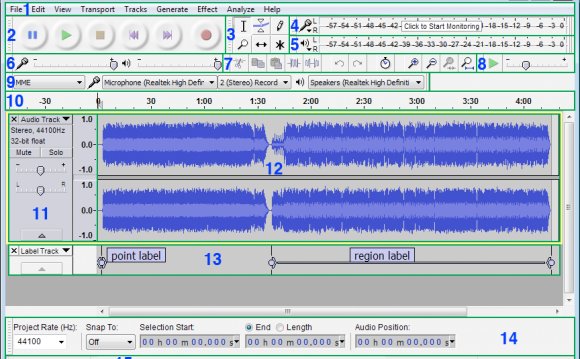


It is regularly updated and should work all the latest versions of macOS and Windows. But there are a ton more including saveable EQ, fading, import and export options, and editing and saving chains of effects. Some of the useful Audacity features include Sync-Lock, Truncate Silence, Silence Finder, and Silence.

One of the downsides is that it can be confusing to use when first getting started, but once you get the hang of it, it’s great. It’s commonly used for podcasting and has powerful features. Click it again to stop recording.Audacity is a free cross-platform audio editor.

Then choose your microphone and recording quality. To change the recording settings, click the arrow next to the Record button.QuickTime Player.supports Audio Recording as well. Now we just click the Red Record button ( )to start audio recording. Here USB PnP Audio Device is the correct setting.Īt Recording please do choose " Software Playthrough of input", otherwise you can not hear the audio while recording.Īfter the correct settings, you can find MIC Source, Stereo Recording, Built-in Output are well selected. Select " Devices" and make proper settings for " Playback" & " Recording / Device:". Make sure your hardware is fine, then we need to configurate the Audacity before using it recording audio. Step 2 -Open Audacity & make necessary Settings. Notice - To use Audacity on your macOS, always to make sure the USB-Audio-Grabber is plugged on your mac's USB port, and Audacity software is not open. Macs powered by Apple silicon, such as the M1 MacBook Pro, can run both iOS apps and Mac apps, but they can also run x86-64 software that's been built to work on Intel architecture, thanks to something called Rosetta 2. Notice - Mac has M1 & Intel architecture model now.


 0 kommentar(er)
0 kommentar(er)
